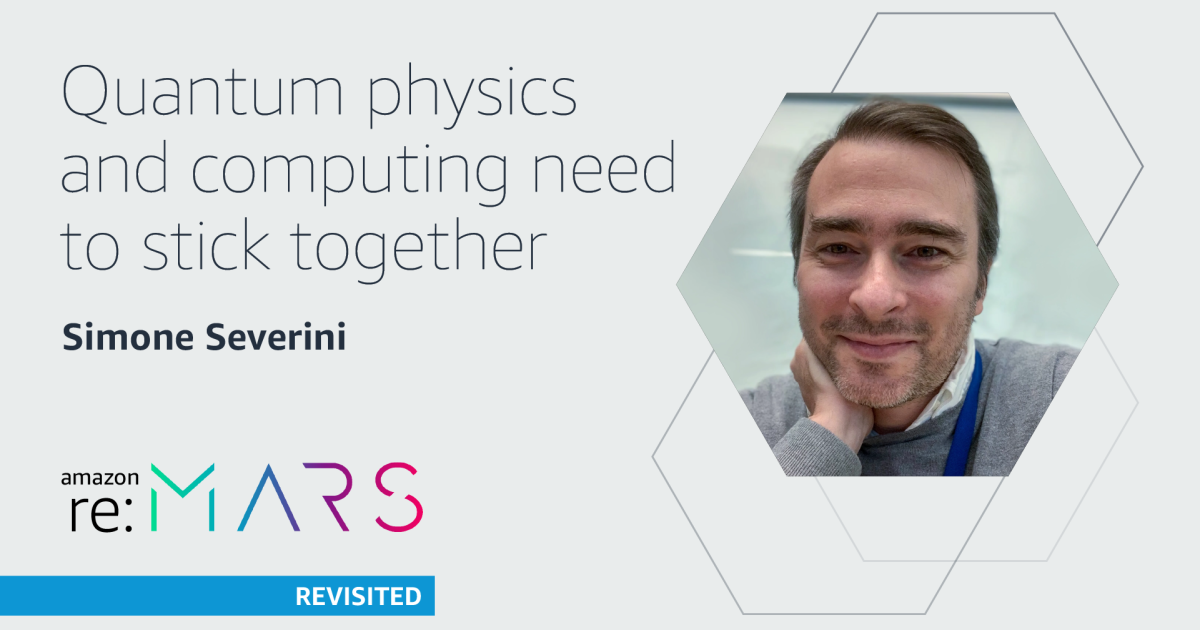In June 2022, Amazon re:MARS, the company’s in-person event exploring advances and practical applications in machine learning, automation, robotics and aerospace (MARS), took place in Las Vegas. The event brought together thought leaders and technical experts building the future of artificial intelligence and machine learning, and included keynote speeches, innovation spotlights and a series of breakout session talks.
Now, in our re:MARS revisited series, Amazon Science takes a look back at some of the keynotes and breakout session talks from the conference. We have asked the presenters three questions about their talk, and we provide the full video of their presentation.
On June 27, Simone Severini, director of quantum computing for Amazon Web Services, presented the talk “Quantum physics and computing need to stick together”. His session focused on misconceptions about quantum computing and an overview of the scientific possibilities offered by quantum technology.
What was the central theme of your presentation?
A quantum computer is a computer that can encode information in very small objects, such as single atoms, and manipulate them one by one to perform calculations. But before I talk about quantum computers, I have to say something about quantum physics, which is the physics of very small objects like atoms or electrons or photons, the components of light. Quantum physics is already an important part of many technologies. For example nuclear magnetic resonance or NMR: it only works because of our understanding of quantum physics. Even transistors, the building blocks of computer systems today, could only be invented because we mastered quantum physics. These are all applications from the last century that were based on an understanding of physics. Now we want to do more: we want to use quantum physics to our advantage. One area where we can do that is now technologies – for example quantum computers – that aim to process or transfer information.
In which applications do you expect this work to have the greatest impact?
A good analogy for quantum computers is not a calculator, but a telescope. Why? Because quantum computers are primarily a research tool that will allow us to look deeper into quantum physics and fundamental reality. For the first time in the history of science, we can control complex quantum systems with many components. This allows us to study phenomena like entanglement in ways that were impossible before. There is a lot of talk about using future quantum computers to study new materials, new drugs, and even to approach optimization problems that apply to processes and business. But the truth is that it is still too early to understand what the impact of quantum computing applications will be.
What are the main points you hope the audience takes away from your speech?
Quantum computing is an exciting area of research. It’s still early days, but their promise deserves attention. These machines have not proven useful for business problems today. They cannot break encryption today. They are no smaller than conventional computers, although their components are nanoscopic. Quantum computers will not replace conventional computers. They do not provide instant solutions and will not speed up all problems. Designing algorithms for quantum computers is as difficult as formulating useful use cases. But while building quantum computers at scale is difficult, there are no demonstrable roadblocks to building them, and we’re all excited to see what the future holds for us in this field. Right now, what we can do is try to accelerate innovation to bring the future closer.
Amazon re: MARCH 2022: Quantum physics and computing must be connected
